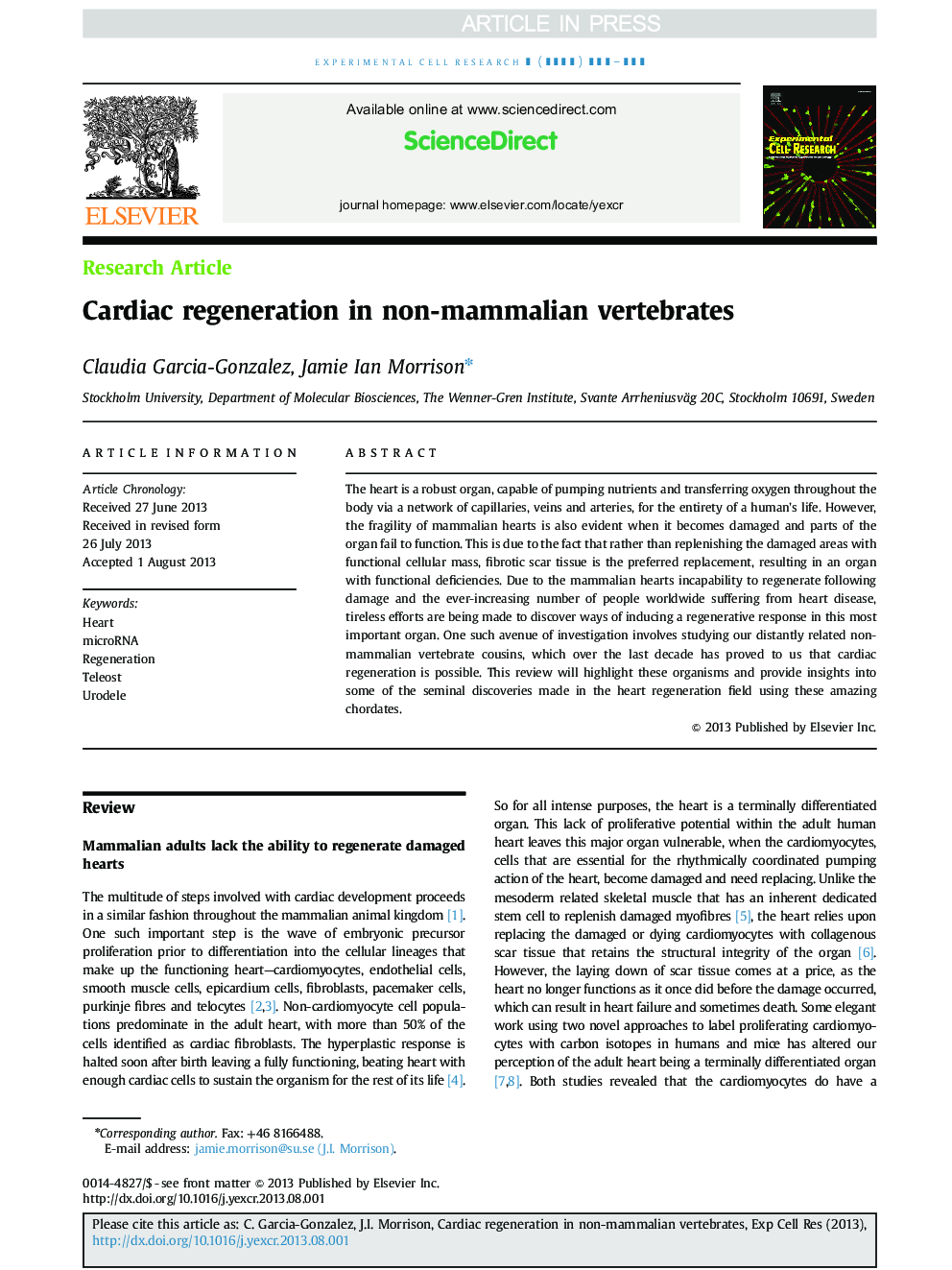| Article ID | Journal | Published Year | Pages | File Type |
|---|---|---|---|---|
| 10904110 | Experimental Cell Research | 2014 | 6 Pages |
Abstract
The heart is a robust organ, capable of pumping nutrients and transferring oxygen throughout the body via a network of capillaries, veins and arteries, for the entirety of a human's life. However, the fragility of mammalian hearts is also evident when it becomes damaged and parts of the organ fail to function. This is due to the fact that rather than replenishing the damaged areas with functional cellular mass, fibrotic scar tissue is the preferred replacement, resulting in an organ with functional deficiencies. Due to the mammalian hearts incapability to regenerate following damage and the ever-increasing number of people worldwide suffering from heart disease, tireless efforts are being made to discover ways of inducing a regenerative response in this most important organ. One such avenue of investigation involves studying our distantly related non-mammalian vertebrate cousins, which over the last decade has proved to us that cardiac regeneration is possible. This review will highlight these organisms and provide insights into some of the seminal discoveries made in the heart regeneration field using these amazing chordates.
Related Topics
Life Sciences
Biochemistry, Genetics and Molecular Biology
Cancer Research
Authors
Claudia Garcia-Gonzalez, Jamie Ian Morrison,
